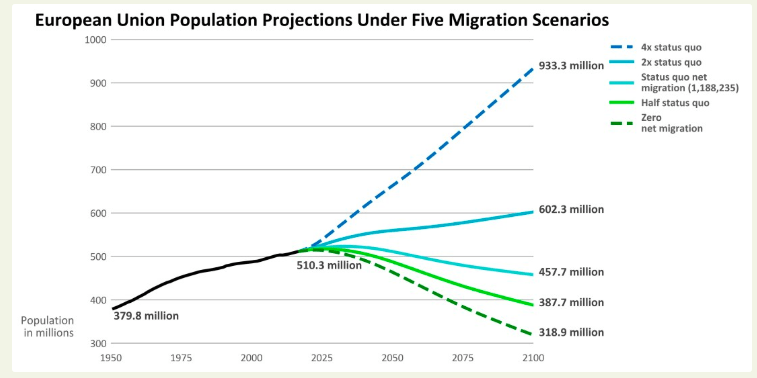Item Link: Access the Resource
Date of Publication: December 19. 2018
Publisher: The Overpopulation Project
Author(s): The Overpopulation Project
Researchers at The Overpopulation Project are pleased to present new population projections out to 2100 for the countries of the European Union and for the EU as a whole, in a new working paper. These projections differ from previous national and region-wide projections primarily in projecting a wider range of scenarios farther out into the future than has typically been done. We provide population projections under nine different fertility and migration scenarios for every country in the EU and Norway. Click on the links below to view projections for specific countries and to see how today’s policy choices may influence your country’s population numbers tomorrowOur national and regionwide population projections are designed to illuminate the policy choices facing the countries of the EU today, and include a discussion of the long-range demographic and environmental implications of those choices.
Among key results, we find that demographic policy changes have the potential to increase or decrease future populations across the EU by several hundred million people by 2100.
See the working paper for details regarding our projection methods, how the scenarios were chosen, and the implications for greenhouse gas emissions and biodiversity conservation of different demographic trajectories.Download Appendix I and II for complete projections for all countries in the EU, and for the detailed projection parameters. We welcome your comments on this work in progress!
Read the full report here.
The views and opinions expressed through the MAHB Website are those of the contributing authors and do not necessarily reflect an official position of the MAHB. The MAHB aims to share a range of perspectives and welcomes the discussions that they prompt.
